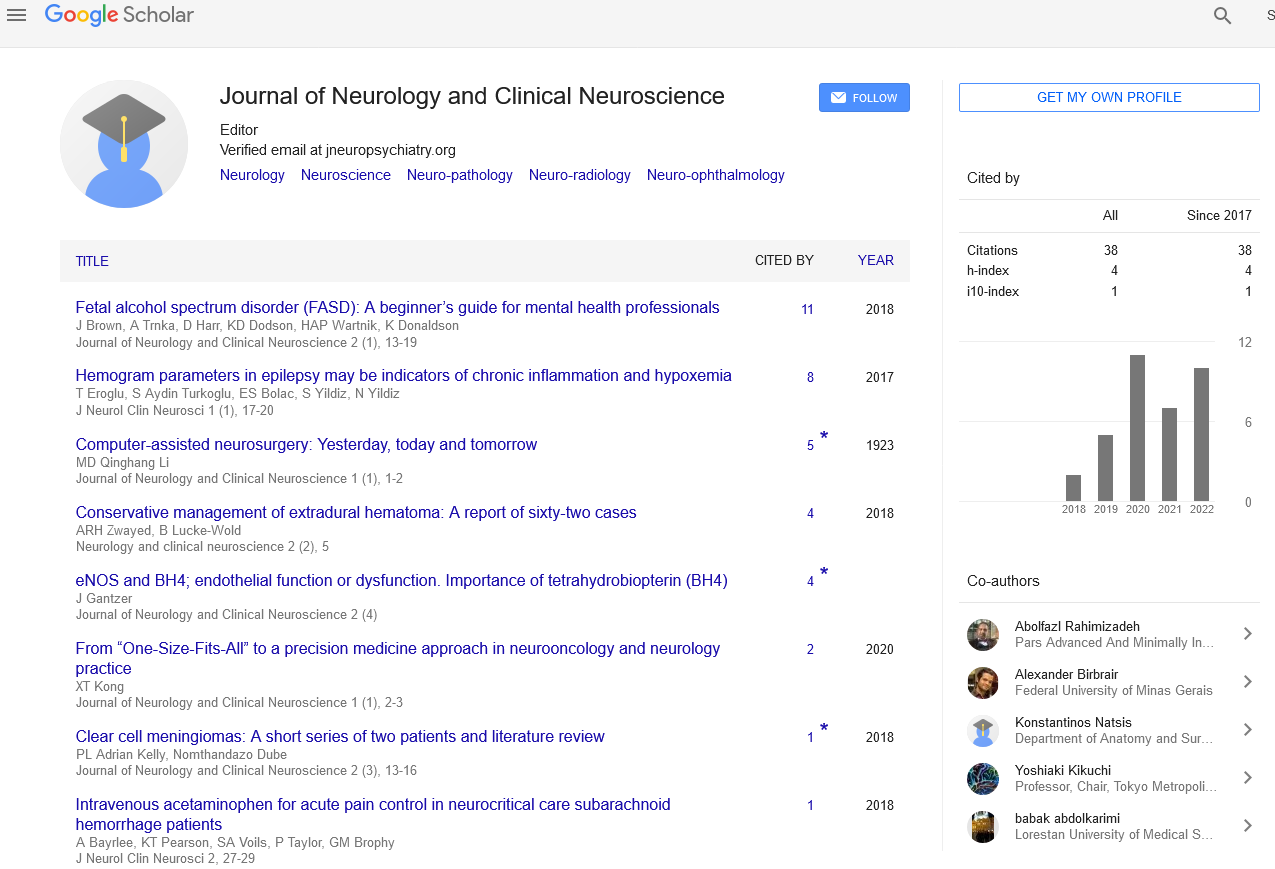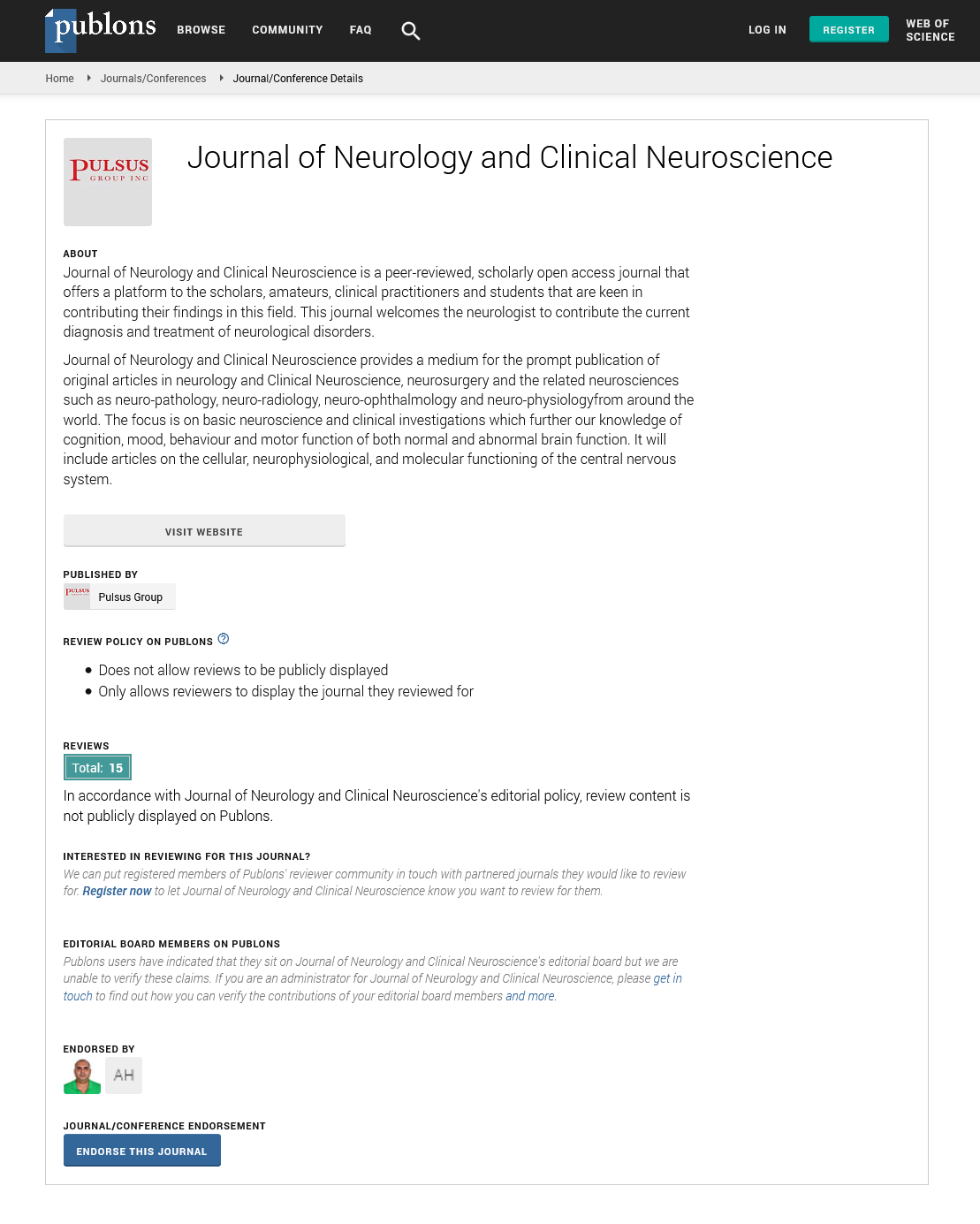use of orbital sonography in neurology
Received: 01-Dec-2021 Accepted Date: Dec 15, 2021; Published: 22-Dec-2021
Citation: Everett V. Use of orbital sonography in neurology. J Neurol Clin Neurosci. 2021;5(5);6.
This open-access article is distributed under the terms of the Creative Commons Attribution Non-Commercial License (CC BY-NC) (http://creativecommons.org/licenses/by-nc/4.0/), which permits reuse, distribution and reproduction of the article, provided that the original work is properly cited and the reuse is restricted to noncommercial purposes. For commercial reuse, contact reprints@pulsus.com
Discussion
Color-coded duplex sonography is a grounded non-obtrusive strategy for vascular and parenchymal assessment in a wide scope of neurological problems including stroke, cerebral venous apoplexy and degenerative infections, among others. Thinking about improvement, cell types and vascular designs just as pathology and pathophysiology, high similitudes and collaborations exist between the Central Nervous System (CNS) and the eye. When applied to the eye and the circle, High-goal Color-Coded duplex Sonography (HCCS) may portray an assortment of pathologic changes like papilledema or focal retinal course impediment, that address appearance of CNS problems (for example raised intracranial pressing factor) or foundational sicknesses (for example atherothrombotic/thrombembolic impediments), separately. Albeit effectively available, OCCS has not yet acquired far reaching use in day by day neurological practice notwithstanding the way that most current ultrasound frameworks are equipped for performing such an undertaking. Notwithstanding, this method might be an extremely accommodating, quick and incredible indicative strategy notwithstanding the demonstrative battery required for disentangling explicit CNS or fundamental sicknesses. In this book section article we feature various parts of HCCS and focus on techniques and infections applicable for nervous system specialists. The differential analysis of orbital tumors (for example lymphoma, optic sheath meningeoma, pseudotumor orbitae, myositis, and others) or vascular anomalies (for example varicosis, unrivaled orbital venous dilatation in arterio-venousfistula) won't be examined. The initial segment acquaints the peruser with the specialized necessities, limitations and wellbeing for performing sonography of the eye. Typical important life structures just as would be expected qualities will be given. The subsequent part centers around normal vascular pathologies, for example, focal retinal course impediment with regards to suspected goliath cell arteritis just as expanding of the optic nerve and papilledema connected to raised intracranial pressing factor. Being a genuinely youthful procedure, barely any investigations utilizing HCCS exist, yet a huge assortment of intriguing pathology and varieties might be found as exemplified in the third and last piece of the part. Visual shading coded duplex sonography is an interesting procedure with high potential for nervous system specialists in differential conclusion and treatment of a growing assortment of intense and constant CNS illness.
Orbital sonography can be effortlessly performed utilizing most shading duplex ultrasound frameworks outfitted with high recurrence straight cluster transducers. Since the optic focal point just as the glassy don't retain critical ultrasound energy and make close to handle antiquities for all intents and purposes unthinkable, usually utilized communicate frequencies in nervous system science from 7 to 15 MHz might be utilized. As indicated by the physical science of wave spread in tissue and the subsequent hub and horizontal goals, the overall point is to apply high frequencies up to 14 MHz or more. The acoustic yield of the ultrasound frameworks should be acclimated to the prerequisites of orbital sonography as per the ALARA rule to stay away from harm to the focal point and retina. The principle natural impacts would be cavitation and temperature increment, the last being reliant from the insonation time. In creature tests hurtful impacts of ultrasound acoustic capacity to visual designs (esp. focal point and choroid) could be illustrated. Subsequently, current rules delivered by as far as possible the acoustic yield to worldly average forces of up to 50mW/cm2 and a Mechanical File (MF) of up to 0.23. An on-screen pointer of ultrasonic yield, the MF is a proportion of the probability that a clinically significant non-warm natural impact might happen during an indicative assessment.





